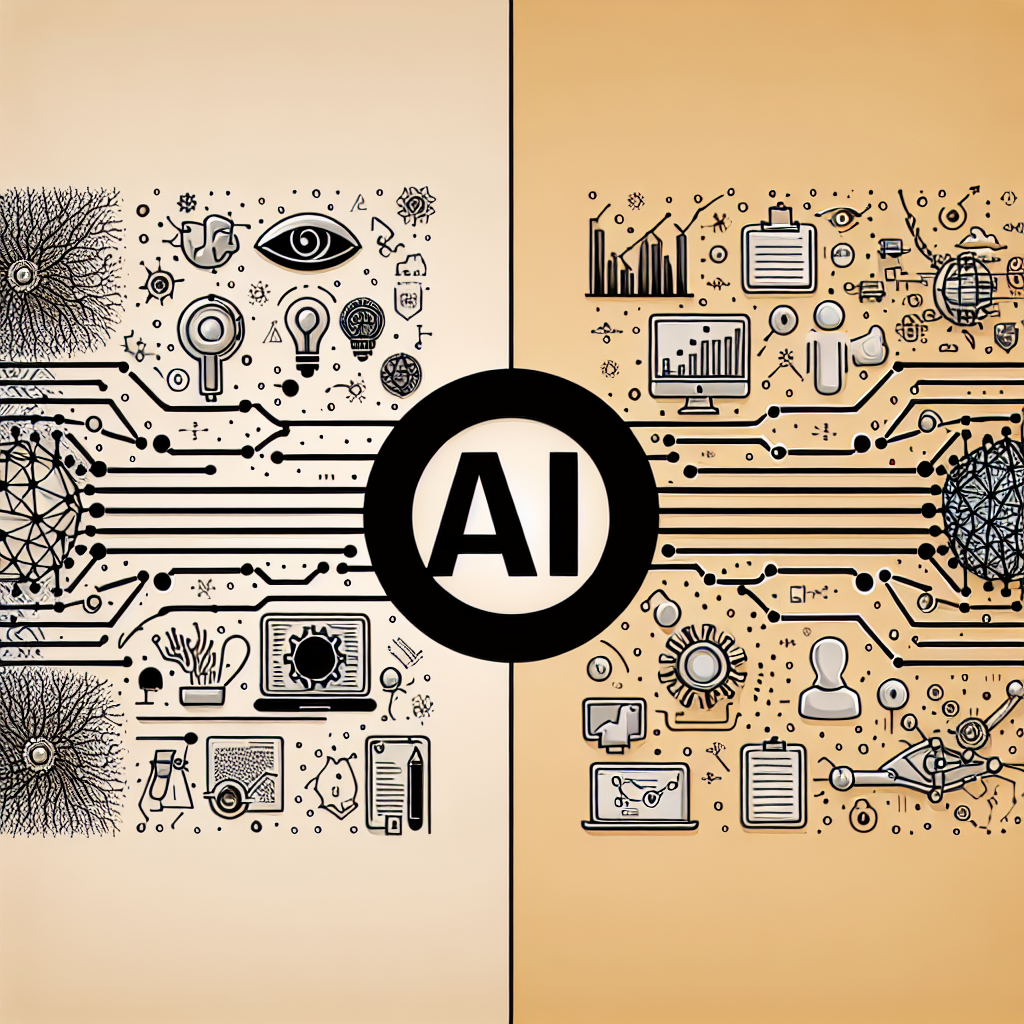Artificial Intelligence (AI) has become a buzzword in recent years, with advancements in technology allowing machines to perform tasks that were once thought to be exclusive to humans. However, the field of AI is not monolithic, but rather consists of various subfields with different levels of complexity and capabilities. Two of the most prominent subfields within AI are Artificial General Intelligence (AGI) and Narrow AI. In this article, we will explore the differences between AGI and Narrow AI, and discuss the implications of each for society.
AGI vs. Narrow AI: Understanding the Differences
Artificial General Intelligence (AGI) refers to a machine’s ability to understand and learn any intellectual task that a human being can. AGI is the holy grail of AI research, as it represents the ultimate goal of creating machines that can think, reason, and solve problems in a way that is indistinguishable from human intelligence. AGI would be able to perform a wide range of tasks across multiple domains, without needing to be specifically programmed for each task.
On the other hand, Narrow AI, also known as Weak AI, refers to AI systems that are designed for a specific task or set of tasks. Narrow AI is currently the most common form of AI in use today, with examples including voice assistants like Siri and Alexa, recommendation algorithms used by streaming services like Netflix, and self-driving cars. Narrow AI is limited in scope and cannot generalize its knowledge to new tasks or domains.
The key difference between AGI and Narrow AI lies in their level of generalization and adaptability. AGI is designed to be flexible and versatile, while Narrow AI is designed to excel at a specific task or set of tasks. AGI aims to replicate the full range of human cognitive abilities, while Narrow AI focuses on solving specific problems within a limited domain.
Implications for Society
The development of AGI has the potential to revolutionize society in ways that are difficult to predict. AGI could lead to advancements in fields such as healthcare, education, transportation, and more, as machines with human-level intelligence could assist and augment human decision-making in a variety of contexts. However, the advent of AGI also raises significant ethical and societal concerns.
One of the main concerns surrounding AGI is the potential for job displacement. If machines are able to perform a wide range of tasks with human-level intelligence, many jobs that are currently performed by humans could be automated, leading to widespread unemployment and economic disruption. Additionally, there are concerns about the ethical implications of creating machines that possess human-like intelligence, including questions about machine rights, autonomy, and accountability.
On the other hand, Narrow AI has already had a significant impact on society, with AI systems being used in a wide range of applications to improve efficiency, productivity, and convenience. However, Narrow AI is limited in its capabilities and cannot replicate the full range of human intelligence. As a result, the risks associated with Narrow AI are generally more manageable than those associated with AGI.
Overall, the development of both AGI and Narrow AI has the potential to bring about significant societal changes, both positive and negative. It is essential for policymakers, researchers, and the public to engage in discussions about the implications of AI and to consider how best to harness its potential while mitigating its risks.
FAQs
Q: What are some examples of Narrow AI?
A: Examples of Narrow AI include voice assistants like Siri and Alexa, recommendation algorithms used by streaming services like Netflix, and self-driving cars.
Q: What are the main differences between AGI and Narrow AI?
A: The main difference between AGI and Narrow AI lies in their level of generalization and adaptability. AGI is designed to be flexible and versatile, while Narrow AI is designed to excel at a specific task or set of tasks.
Q: What are some of the ethical concerns surrounding AGI?
A: Some of the main ethical concerns surrounding AGI include job displacement, machine rights, autonomy, and accountability.
Q: How can society harness the potential of AI while mitigating its risks?
A: It is essential for policymakers, researchers, and the public to engage in discussions about the implications of AI and to consider how best to harness its potential while mitigating its risks. This may involve implementing regulations, developing ethical guidelines, and promoting transparency and accountability in AI development and deployment.

